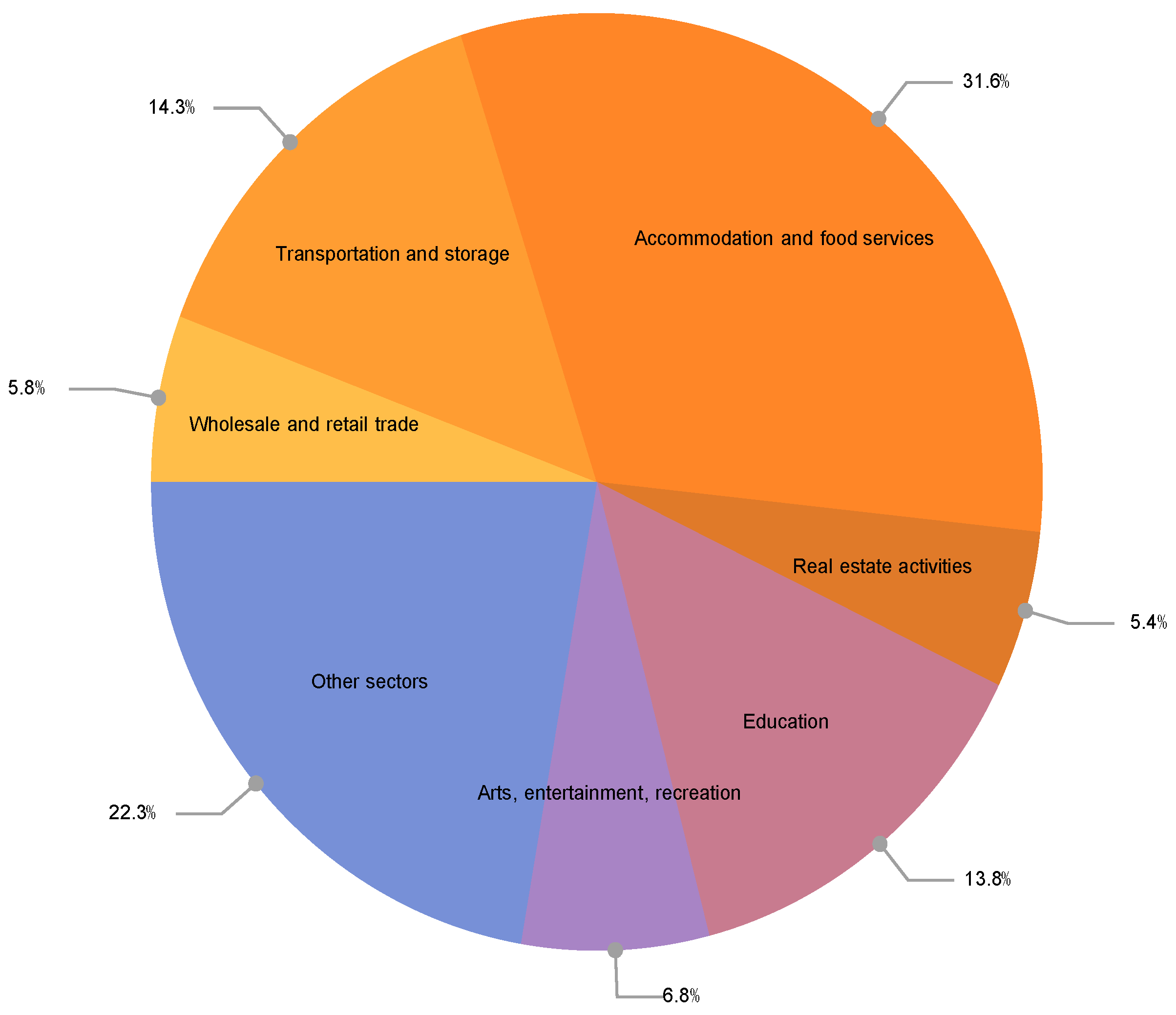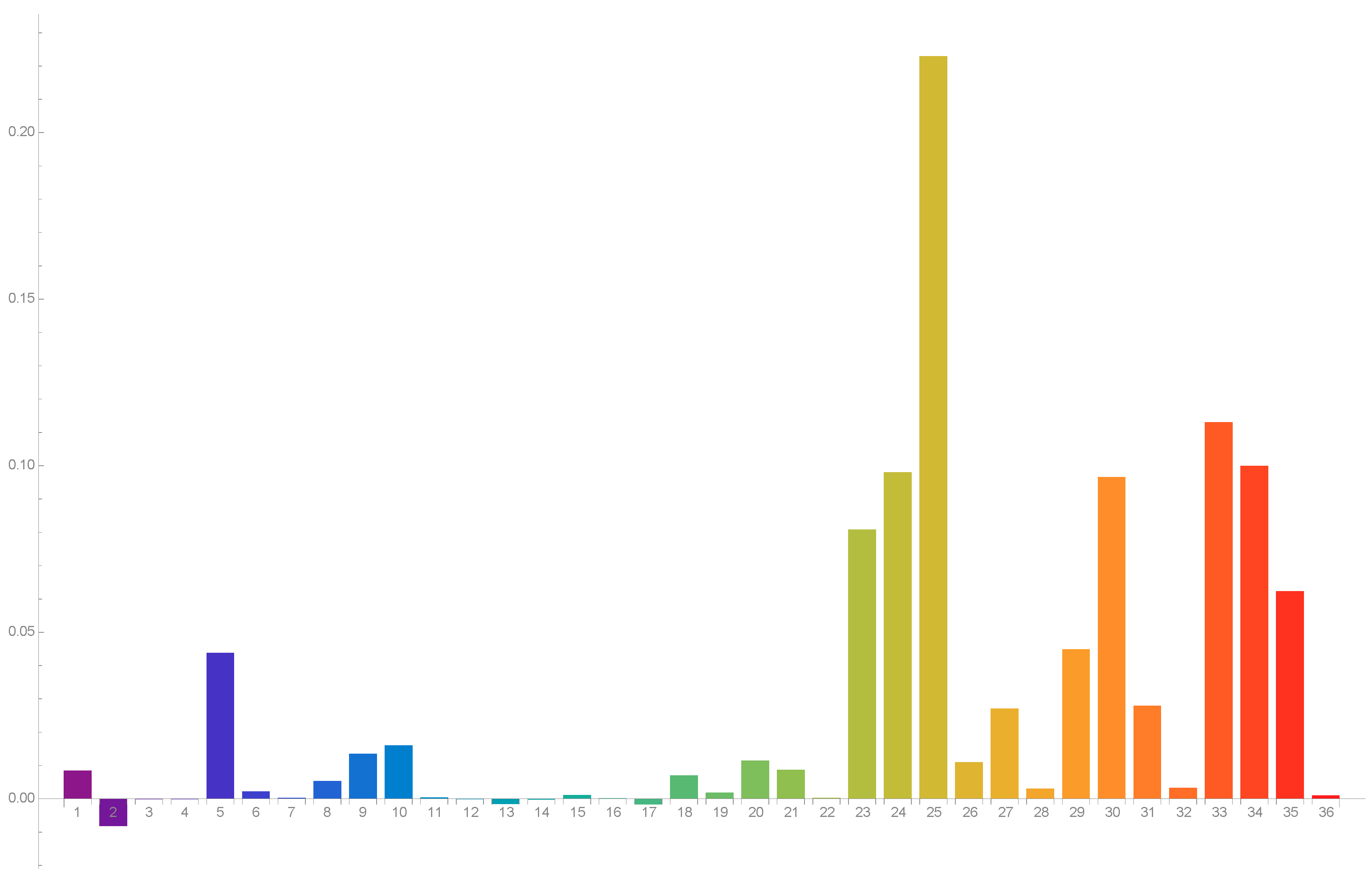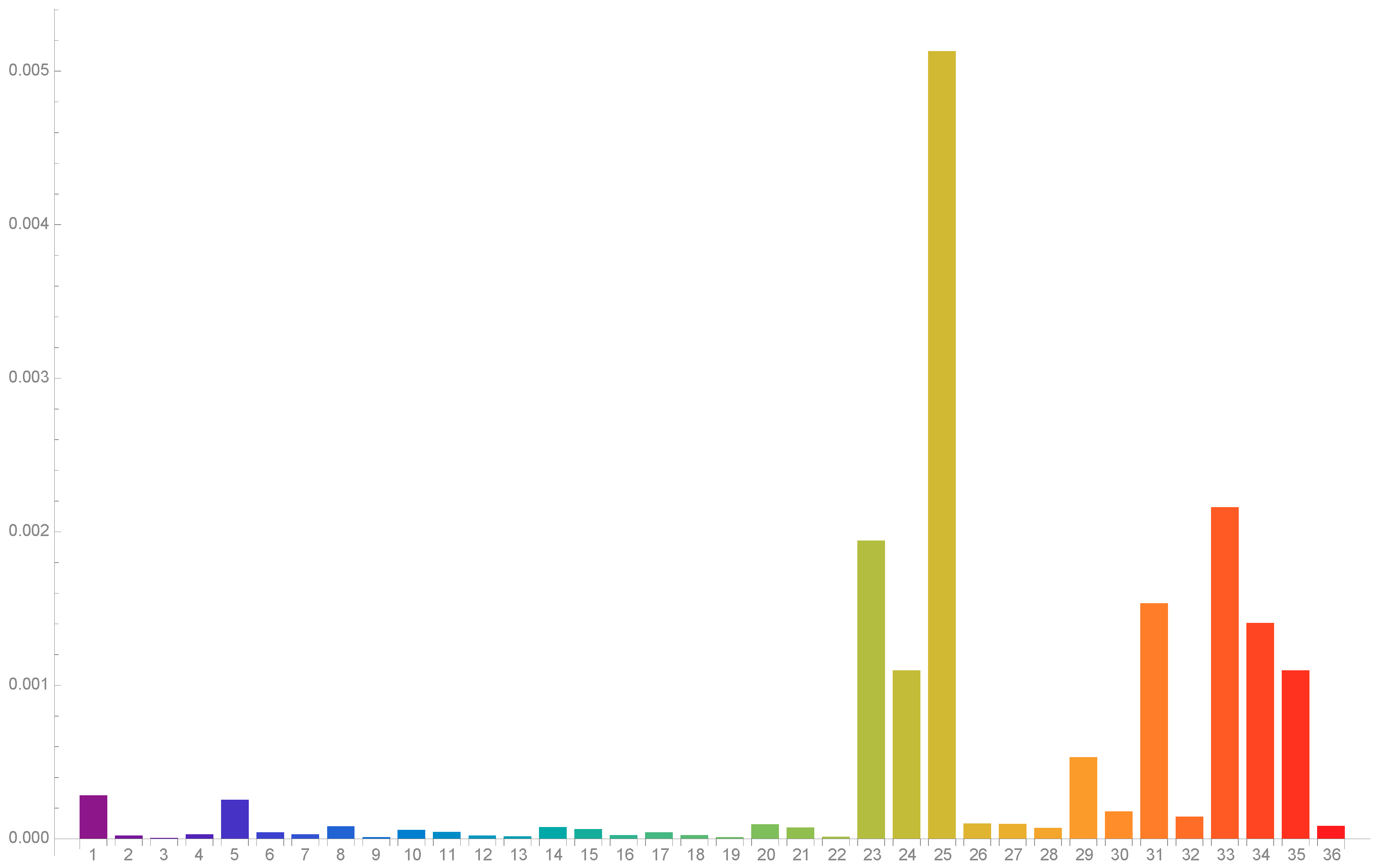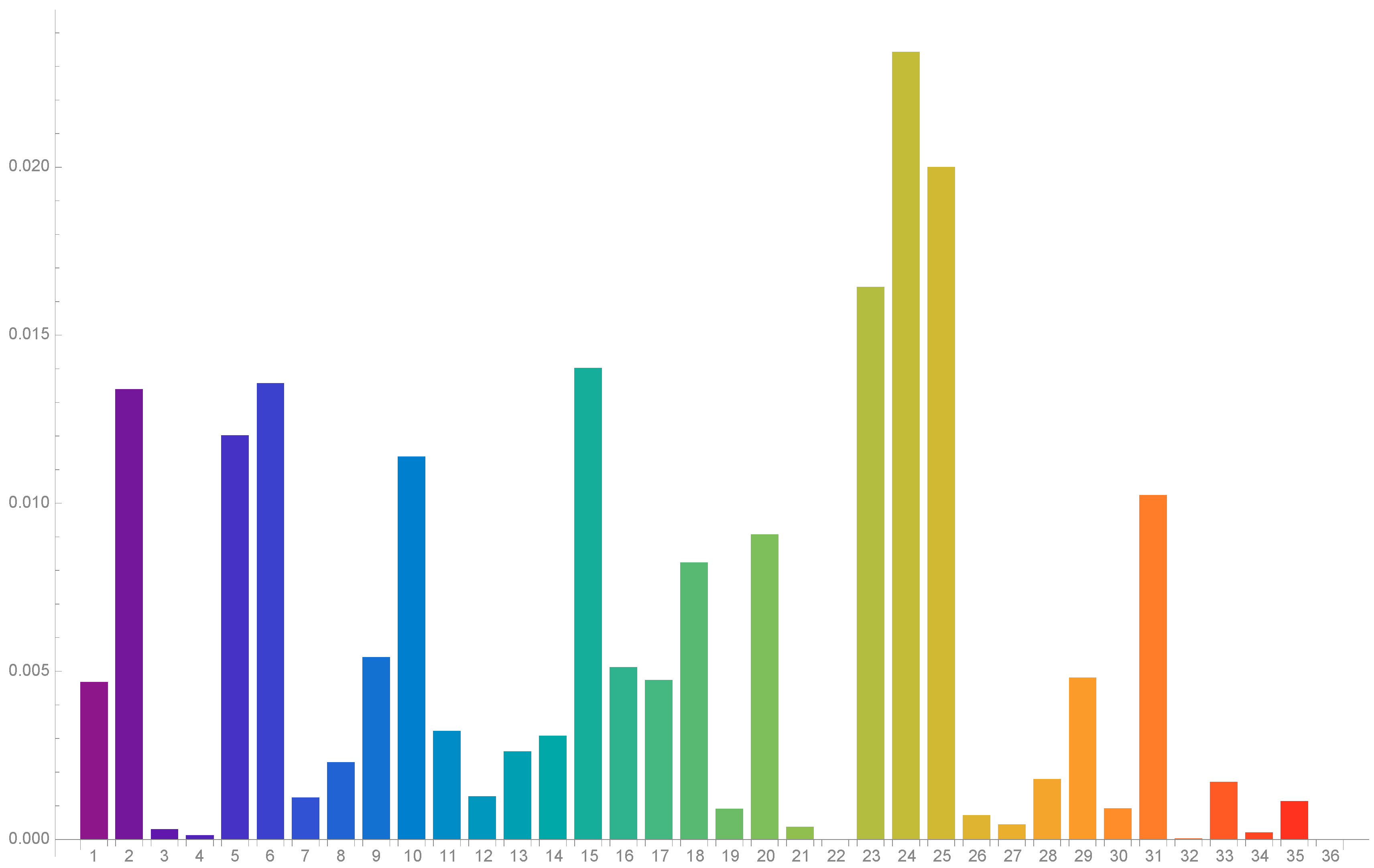The Impact of COVID-19 on the US Economy: The Multiplier Effects of Tourism
Abstract
:1. Introduction
2. Methods and Materials
3. Empirical Results and Discussion
- Decrease in domestic product of about USD 1.53 million;
- Decrease in the level of employment of about 16.86 persons;
- Decrease in imports of about USD 0.20 million.
4. Concluding Remarks
Author Contributions
Funding
Institutional Review Board Statement
Informed Consent Statement
Data Availability Statement
Acknowledgments
Conflicts of Interest
| 1 | After the longest recovery in its history, which started in June 2009, the US economy fell into recession in February 2020. For a detailed analysis of the developments of the US economy, see Papadimitriou et al. (2021). |
| 2 | For a detailed exposition, see, e.g., Mariolis et al. (2021); Rodousakis and Soklis (2021). For corresponding applications in a joint production framework, see Mariolis and Soklis (2018); Mariolis et al. (2018, 2020). |
| 3 | This data is given by “Direct purchases by non-residents (exports)”, which is included in the IOTs of the OECD’s database. |
| 4 | The analytical results are available on request from the authors. The variables necessary for the empirical analysis were constructed using information from IOTs and following the standard procedure in the relevant literature (see, e.g., Mariolis et al. 2018, Appendix 1). |
| 5 | The average multipliers correspond to the changes on the money values of net output and imports, and on employment (measured in persons), respectively, induced by a simultaneous increase of units in the autonomous demand for the product of each of the 36 sectors. |
| 6 | The data are obtained from https://stats.oecd.org (accessed on 30 September 2021). |
References
- Farzanegan, Mohammad Reza, Hassan F. Gholipour, Mehdi Feizi, Robin Nunkoo, and Amir Eslami Andargoli. 2020. International tourisn and outbreak of coronavirus (COVID-19): A cross-country analysis. Journal of Travel Research 60: 687–92. [Google Scholar] [CrossRef]
- Kurz, Heinz Dieter. 1985. Effective demand in a “classical” model of value and distribution: Τhe multiplier in a Sraffian framework. Manchester School 53: 121–37. [Google Scholar] [CrossRef]
- Lee, Chien-Chiang, and Mei-Ping Chen. 2020. The impact of COVID-19 on the travel and leisure industry returns: Some international evidence. Tourism Economics, in press. [Google Scholar] [CrossRef]
- Mariolis, Theodore. 2008. Pure joint production, income distribution, employment and the exchange rate. Metroeconomica 59: 656–65. [Google Scholar] [CrossRef]
- Mariolis, Theodore, and George Soklis. 2018. The static Sraffian multiplier for the Greek economy: Εvidence from the supply and use table for the year 2010. Review of Keynesian Economics 6: 114–47. [Google Scholar] [CrossRef]
- Mariolis, Theodore, Nikolaos Ntemiroglou, and George Soklis. 2018. The static demand multipliers in a joint production framework: Comparative findings for the Greek, Spanish and Eurozone Economies. Journal of Economic Structures 7: 18. [Google Scholar] [CrossRef]
- Mariolis, Theodore, Nikolaos Rodousakis, and George Soklis. 2020. The COVID-19 multiplier effects of tourism on the Greek economy. Tourism Economics 27: 1848–55. [Google Scholar] [CrossRef]
- Mariolis, Theodore, Nikolaos Rodousakis, and George Soklis. 2021. Inter-sectoral analysis of the Greek economy and the COVID-19 multiplier effects. European Politics and Society, in press. [Google Scholar] [CrossRef]
- Metcalfe, Metcalfe, and Ian Steedman. 1981. Some long-run theory of employment, income distribution and the exchange rate. Manchester School 49: 1–20. [Google Scholar] [CrossRef]
- Papadimitriou, Dimtri, Michalis Nikiforos, and Gennaro Zezza. 2021. The Pandemic, the Stimulus, and the Future Prospects for the US Economy. Strategic Analysis. Annandaleon-Hudson: Levy Economics Institute of Bard College. [Google Scholar]
- Qiu, Richard T.R., Jinah Park, ShiNa Li, and Haiyan Song. 2020. Social costs of tourism amid COVID-19 pandemic. Annals of Tourism Research 84: 102994. [Google Scholar] [CrossRef] [PubMed]
- Rodousakis, Nikolaos, and George Soklis. 2021. The COVID-19 multiplier effects of tourism on the German and Spanish economies. Evolutionary and Institutional Economics Review, in press. [Google Scholar]
- Tsionas, Mike G. 2020. COVID-19 and gradual adjustment in the tourism, hospitality, and related industries. Tourism Economics 27: 1828–1832. [Google Scholar] [CrossRef]
- World Travel and Tourism Council (WTTC). 2021. Travel & Tourism: Economic Impact 2021. London: WTTC, April 6. [Google Scholar]
- Yang, Yang, Hongru Zhang, and Xiang Chen. 2020. Coronavirus pandemic and tourism: Dynamic stochastic general equilibrium modeling of infectious disease outbreak. Annals of Tourism Research 83: 102913. [Google Scholar] [CrossRef]





| No. | Nomenclature |
|---|---|
| 1 | Agriculture, forestry and fishing |
| 2 | Mining and extraction of energy producing products |
| 3 | Mining and quarrying of non-energy producing products |
| 4 | Mining support service activities |
| 5 | Food products, beverages and tobacco |
| 6 | Textiles, wearing apparel, leather and related products |
| 7 | Wood and products of wood and cork (except furniture) |
| 8 | Paper products and printing |
| 9 | Coke and refined petroleum products |
| 10 | Chemicals and pharmaceutical products |
| 11 | Rubber and plastics products |
| 12 | Other non-metallic mineral products |
| 13 | Manufacture of basic metals |
| 14 | Fabricated metal products, except machinery and equipment |
| 15 | Computer, electronic and optical products |
| 16 | Electrical equipment |
| 17 | Machinery and equipment NEC |
| 18 | Motor vehicles, trailers and semi-trailers |
| 19 | Other transport equipment |
| 20 | Other manufacturing; repair and installation of machinery and equipment |
| 21 | Electricity, gas, water supply, sewerage, waste and remediation services |
| 22 | Construction |
| 23 | Wholesale and retail trade; repair of motor vehicles |
| 24 | Transportation and storage |
| 25 | Accommodation and food services |
| 26 | Publishing, audiovisual and broadcasting activities |
| 27 | Telecommunications |
| 28 | IT and other information services |
| 29 | Financial and insurance activities |
| 30 | Real estate activities |
| 31 | Other business sector services |
| 32 | Public administration and defence; compulsory social security |
| 33 | Education |
| 34 | Human health and social work |
| 35 | Arts, entertainment, recreation and other service activities |
| 36 | Private households with employed persons |
| Multipliers | Economy’s Average | Tourism |
|---|---|---|
| Output | 1.35 | 1.53 |
| Employment | 12.87 | 16.86 |
| Imports | 0.28 | 0.20 |
Publisher’s Note: MDPI stays neutral with regard to jurisdictional claims in published maps and institutional affiliations. |
© 2021 by the authors. Licensee MDPI, Basel, Switzerland. This article is an open access article distributed under the terms and conditions of the Creative Commons Attribution (CC BY) license (https://creativecommons.org/licenses/by/4.0/).
Share and Cite
Rodousakis, N.; Soklis, G. The Impact of COVID-19 on the US Economy: The Multiplier Effects of Tourism. Economies 2022, 10, 2. https://doi.org/10.3390/economies10010002
Rodousakis N, Soklis G. The Impact of COVID-19 on the US Economy: The Multiplier Effects of Tourism. Economies. 2022; 10(1):2. https://doi.org/10.3390/economies10010002
Chicago/Turabian StyleRodousakis, Nikolaos, and George Soklis. 2022. "The Impact of COVID-19 on the US Economy: The Multiplier Effects of Tourism" Economies 10, no. 1: 2. https://doi.org/10.3390/economies10010002
APA StyleRodousakis, N., & Soklis, G. (2022). The Impact of COVID-19 on the US Economy: The Multiplier Effects of Tourism. Economies, 10(1), 2. https://doi.org/10.3390/economies10010002






